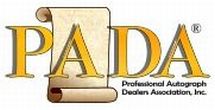2025602
Nazi Defendants
Nuremberg War Crimes Trials
Scroll down to see images of the item below the description
Signatures of 12 Nazi defendants tried at the Nuremberg War Crimes Trials,
including eight of the ten who were hanged—
and one who signed on the day he was sentenced to death
Nuremberg War Crimes Trials, 1946.
This is a set of signatures of 12 of the 21 principal defendants tried in person at the Nuremberg War Crimes Trials following the surrender of Nazi Germany in 1945. The signatures are on separate pieces of paper, and the set was assembled by a collector who acquired the pieces at different times. All but one of the signatures were signed when the signer was imprisoned at Nuremberg. One, Ernst Kaltenbrunner, signed on the very day that he was sentenced to death, and another, Arthur Seyss-Inquart, signed two days after the tribunal pronounced his death sentence. Some of the items are in plastic protectors mounted to biographical information of the signers, and one is lightly tipped directly to the biographical piece.
Officially, it was forbidden to ask for autographs from the defendants, although American soldiers did it anyway. Our research has found a few similar sets that have sold at auction, and we sold a set of 19 of the Nuremberg defendants a few years ago.
This set includes eight of the ten defendants who were sentenced to death and were hanged on October 16, 1946. The 12 defendants’ signatures present here are those of:
• Dr. Hans Michael Frank (1900–1946). Frank, a lawyer who worked for the Nazi Party and served as Hitler’s personal lawyer, was Governor-General of the General Government of Nazi-occupied Poland. He led a reign of terror against the civilian population and was directly involved in the Holocaust. At Nuremberg, he was found guilty of war crimes and crimes against humanity and was hanged.
Frank has signed this 7¾” x 5¼” typed document with a bold signature, Dr. Hans Frank, to certify in both English and German that the signature was his “correct” or “proper” signature. He has added the date, 1. Sept. 1945, the date the war crimes tribunal adjourned after hearing all of the evidence, in his own hand. The paper is irregularly trimmed, and there is a small amount of paper loss at the right edge that appears to be from file holes. A pencil note in another hand at the bottom edge identifies Frank, and there are old dealer pencil notes about Frank on the back. Overall the piece is in fine condition.
• Hans Georg Fritzsche (1899–1953). Fritzsche was the director of the Reich Ministry of Public Enlightenment and Propaganda. He was present with Hitler, holed up in the Führerbunker in Berlin, during Hitler’s final days. He was captured by the Red Army on May 1, 1945, when he offered to surrender the city to the Soviets following Hitler’s suicide. He was acquitted at Nuremberg, although he was later convicted by a West German denazification court. He was released in 1950 and died of cancer in 1953.
This is a pencil signature by Fritzsche, Hans Fritzsche, who has dated it in his hand 1946, thus dating it during the trial. The piece has Fritzsche’s name written in ink in another hand on the back. The piece is irregularly shaped, the paper evidently torn from a large piece; only the left edge is relatively straight. Overall the piece is in fine condition.
• Walther Funk (1890–1960). An economist, Funk served as the Reich Minister for Economic Affairs, 1938–1945. Although his health was poor, Funk was tried at Nuremberg and convicted on three counts: planning, initiating, and waging wars of aggression; war crimes; and crimes against humanity. He was sentenced to life in prison and served his sentence in Spandau Prison in Berlin, where other imprisoned senior Nazi officials were held, until he was released because of his health in 1957.
Funk has boldly signed in brown ink with a large signature on a 3” x 5” piece of paper and has added Nürnberg 4. September / 1946 beneath his signature. At the lower left corner there is a notation in another hand “Cell 20 – Funk.” The paper is uniformly toned, with a small foxing spot well removed from the handwriting, and has been laminated in plastic. Overall it is in fine condition.
• General Alfred Josef Ferdinand Jodl (1890–1946). Jodl was a Generaloberst in the Wehrmacht, the second highest general officer rank. He served as the chief of the operation staff of OKW, the Oberkommando der Wehrmacht, or Supreme Command of the Armed Forces. He signed both the Commisar Order of June 6, 1941, under which captured Soviet political officers were to be summarily executed, and the Commando Order of October 28, 1942, under which Allied commandos, including properly uniformed soldiers, were also to be summarily executed if captured behind German lines. Jodl signed the instrument of surrender on May 7, 1945, as Dönitz’s representative. At Nuremberg, Jodl was prosecuted principally for the Commisar and Commando Orders. He was found guilty on four charges, including war crimes and crimes against humanity, and was hanged.
This piece is a 2⅞” x 4” card on which Jodl has boldly signed his signature and added his title, Generaloberst a. D., designating himself as “außer Dienst,” or retired. He has dated the piece 20. 6. 1946, or June 20, 1946, which was the day Albert Speer took the stand to testify in his own defense. On the back of the card, the prison guard who obtained the signature has written “A. Jodl / Cell 6.” The card is uniformly toned and has been laminated in plastic. It is in fine condition and would be very fine to extra fine if it were not laminated.
• Ernst Kaltenbrunner (1903–1946). Kaltenbrunner was the highest-ranking member of the Nazi SS to be tried at Nuremberg. He succeeded Heydrich and Heinrich Himmler as Chief of the Reich Main Security Office, a position he held 1943–1945. A committed anti-Semite, Kaltenbrunner tightened Nazi control within Germany. Under his oversight, Jewish persecution increased as he sought to exterminate Jews in both Germany and the occupied countries as soon as possible. At Nuremberg, Kaltenbrunner was convicted war crimes and crimes against humanity, and he was hanged.
Kaltenbrunner signed this signature on the day that he was sentenced to death—October 1, 1946. He has signed boldly in pencil, E Kaltenbrunner, and added the date, 1 X 46, in his hand. Below his signature is careful pencil identification of Kaltenbrunner as the “Gestapo Chief” and date, “Nuremberg – Oct. 1, 46.” The piece is 3” x 4½” with a carefully torn bottom edge. It has some light toning, particularly on the front above the signature, and some evidence of prior mounting on the back. It is in fine condition.
• Konstantin Hermann Karl Freiherr von Neurath (1873–1956). Von Neurath served as Foreign Minister from 1932 to 1938. During the years leading up to World War II, he played a key role in pursuit of Hitler’s agenda, including Germany’s withdrawal from the League of Nations in 1933 and its remilitarization of the Rhineland, flouting the Treaty of Versailles, in 1937. Hitler replaced him as Foreign Minister with the pliable Joachim von Ribbentrop in 1938 and made von Neurath the Reich Protector for Bohemia and Moravia in 1939, a position that he held until 1943, although his authority was nominal after Hitler, believing that von Neurath was too lenient, made the brutal Reinhard Heydrich his deputy. The Nuremberg tribunal concluded that von Neurath did not hold such a prominent position in the Nazi hierarchy that he deserved death. He was sentenced to only 15 years in prison and was released in November 1954 following a heart attack.
This is a dark signature and date, C. von Neurath, / 1946, during the trial, on a 2½” x 6⅜” piece of paper. While most sources identify von Neurath as “Konstantin,” he seems inevitably to have signed with the first initial “C,” and some sources spell his first name as “Constantin.” The paper has irregular edges at the top and bottom from where it has been torn from a larger sheet. A single vertical fold through the middle of the document has slightly affected the adherence of the ink to the paper, likely from the signature being folded and unfolded when the collector showed it to others. There is a diagonal fold across the lower right corner, well removed from von Neurath’s handwriting, is also an ink notation, “Neurath,” on the back. Overall it is in fine condition.
• Ulrich Friedrich Wilhelm Joachim von Ribbentrop (1893–1946). A confidant of Hitler, von Ribbentrop served as Germany’s Foreign Minister 1938–1945. He was prominent in negotiating two major agreements in 1939: the Pact of Steel, Germany’s alliance with fascist Italy, and the Molotov-Ribbentrop Pact, the non-aggression pact between the Soviet Union and Germany. He was actively involved in planning the German invasions of Austria, Poland, and Czechoslovakia and was involved with sending Jews to death camps in the east. Although he argued at Nuremberg that Hitler had been in control and had deceived him by claiming that he wanted peace, the tribunal did not believe that von Ribbentrop could have “remained unaware of the aggressive nature of Hitler’s actions.” He was the first of the 10 Nazi defendants to be hanged.
Ribbentrop has signed in pencil with a huge 5” signature, Joachim v. Ribbentrop, and noted Nürnberg 1946 on a 3¾” x 6¼” piece of paper. There are irregular folds at the bottom edge and soiling at the upper right, affecting nothing, and two ½” tears at the top, one at the top of the vertical fold that runs through the signature and place. An ink note in another hand on the back identifies von Ribbentrop. The piece is in fine condition.
• Alfred Ernst Rosenberg (1893–1946). Rosenberg was one of the principal architects of Nazi Party ideology, including its positions on race, territorial expansion, abrogation of the Treaty of Versailles, and persecution of the Jews. Following Germany’s 1941 invasion of the Soviet Union, Hitler appointed Rosenberg the head of the Reich Ministry for the Occupied Eastern Territories. In November 1941, Rosenberg said that because approximately “six million Jews still live in the East,” the Jewish question could “only be solved by a biological extermination of the whole Jewry of Europe.” At Nuremberg, he denied knowledge of the Holocaust, but his representatives had attended the Wannsee Conference. He was convicted of all four counts, including war crimes and crimes against humanity. The tribunal found that he was a principal planner of the invasions of Norway and the Soviet Union and that he was responsible for the brutal conditions in Eastern Europe. He was hanged.
This is a 3¼” x 2¼” piece of paper on which Rosenberg has boldly signed A Rosenberg. There is an ink note at the bottom edge identifying Rosenberg and dating the signature May 30, 1946, during the trial. The upper left corner is missing, and there is a light diagonal fold line in the upper right corner. The piece also shows a bit of handling. It is in fine condition and comes with a reproduction postcard photograph of Rosenberg.
• Ernst Friedrich Christoph Sauckel, known as Fritz Sauckel (1894–1946). As the General Plenipotentiary for Labor Deployment from 1942 until the war in Europe ended in 1945, Sauckel was directly responsible for the forced labor of some five million foreign workers, most of them from the occupied territories in the east. Concentration camp workers worked in harsh labor conditions and were allowed only starvation rations. Sauckel was found guilty of war crimes and crimes against humanity and was hanged.
Saukel has signed in brown ink, Fritz Sauckel, on a 3” x 5” piece of paper. Beneath his signature, there is a notation in another hand identifying him and adding “Cell No. 11.” The piece is uniformly toned and has been laminated in plastic. Overall it is in fine condition.
• Hjalmar Horace Greeley Schacht (1877–1970). Along with Fritzsche and Franz von Papen, Schacht was one three of the major defendants acquitted at Nuremberg. An economist and banker, Schacht served as president of the Reichsbank and, from 1934 to 1937, as the Reich Minister of Economics. His opposition to Germany’s violation of the Treaty of Versailles put him at odds with Hitler and Göring. After he was removed as president of the Reichsbank in 1939, he served as a minister without portfolio until Hitler dismissed him from the government entirely in 1943. At Nuremberg, since he was not a member of the Nazi Party and shared little of its ideology, Schacht convinced the tribunal that he had simply tried to strengthen the German economy.
This piece is a 3½” x 5½” postcard on which Schacht has evidently responded to an autograph seeker. He has written “Immer strebe zum Ganzen,” or “always strive for the whole,” and has added his title, Reichsbankpräsident, and the date, 16. 4. 1926, or April 4, 1926. The card is self-addressed to a man in Prague and was mailed from Berlin. The card has light toning, especially around the edges, and a pencil note in another hand on the address side identifies Schacht. It is in fine condition.
• Arthur Seyss-Inquart (1892–1946). Seyss-Inquart, an Austrian Nazi, served as chancellor of Austria for three days in 1938 before Germany annexed Austria following the Austrian Anschluss. Hitler respected Seyss-Inquart and appointed him to government oversight positions in Poland and in the Netherlands. He served as Reichskommissar in the Netherlands, where he led a brutal regime responsible for the forced labor of Dutch civilians and the internment of some 140,000 Jews in concentration camps, including Buchenwald, Mauthausen, Auschwitz, and Theresienstadt. Seyss-Inquart was convicted of crimes against humanity at Nuremberg and was the last of the 10 executed defendants to be hanged.
Seyss-Inquart has signed his last name, Seyss Inquart, and added the date, 3. 10. 46, or October 3, 1946—two days after he was sentenced to death. The signature is in black ink on a 2¼” x 3½” piece of paper. A flattened vertical fold affects the signature but misses the handwriting in the date. There is slight brushing to the “n” in “Inquart,” likely from Seyss-Inquart’ own hand. There are also a stray ink mark at the lower right margin, where it appears the piece has been separated from handwriting or a signature below, and an old dealer pencil notation on the back. The piece is in fine condition.
• Julius Streicher (1885–1946). The crass, obscene Streicher was widely known as Nazi Germany’s “Jew-Baiter Number One.” In 1923, Streicher founded and published Der Stürmer, a violently anti-Semitic weekly tabloid propaganda newspaper that made little pretense of publishing legitimate news. From at least 1933 forward, Der Stürmer repeatedly urged extermination of the Jews. As the Gauleiter of Franconia, he exercised power to excesses that alienated other Nazis, including Hermann Göring and many of the party leaders. He was removed from his party offices 1940 but nevertheless remained on good terms with Hitler and continued to publish Der Stürmer, which Hitler called his favorite newspaper. At Nuremberg, he railed against the Jews, the Allies, and even the tribunal judges. The tribunal found that Streicher’s long history of “speaking, writing and preaching hatred of the Jews” had “infected the German mind with the virus of anti-Semitism, and incited the German people to active persecution.” Streicher was found guilty of crimes against humanity and was hanged.
Streicher has signed across a lined sheet from a 3” x 5” note pad. He has signed a bold 4¼” black ink signature, Julius Streicher, and has added the place and date, Nürnberg / 1945, in his hand. There is cellophane tape in one place on each edge of the paper from mounting in a black paper mat, which covers a pencil note in another hand below the date identifying Streicher. The piece is in fine condition.
Sets such as these are popular when they appear on the market. This is an excellent opportunity to obtain the autographs of many of the high-level Nazis who survived the war, including eight of the 10 defendants who were hanged for war crimes. Additional Nuremberg defendants could be added to the set over time.
We reject Nazism and all that it represented. Yet the German Third Reich and the Holocaust that it systematically carried out played an undeniable role in 20th Century history. These pieces are relics of the Nuremberg trials, which were held in order to document Nazi atrocities so that no one could later convincingly claim that the Holocaust did not occur or that the Nazi German government was not behind it. Since we believe that to decline to offer Third Reich material, although it is offensive, would aid those who want to sweep the Third Reich under the rug and deny that the Holocaust occurred, we offer this material because the world must never forget what happened, lest it happen again. Click here to read more about these thoughts in our Blog posts of January 8 and February 26, 2010.
Unframed.
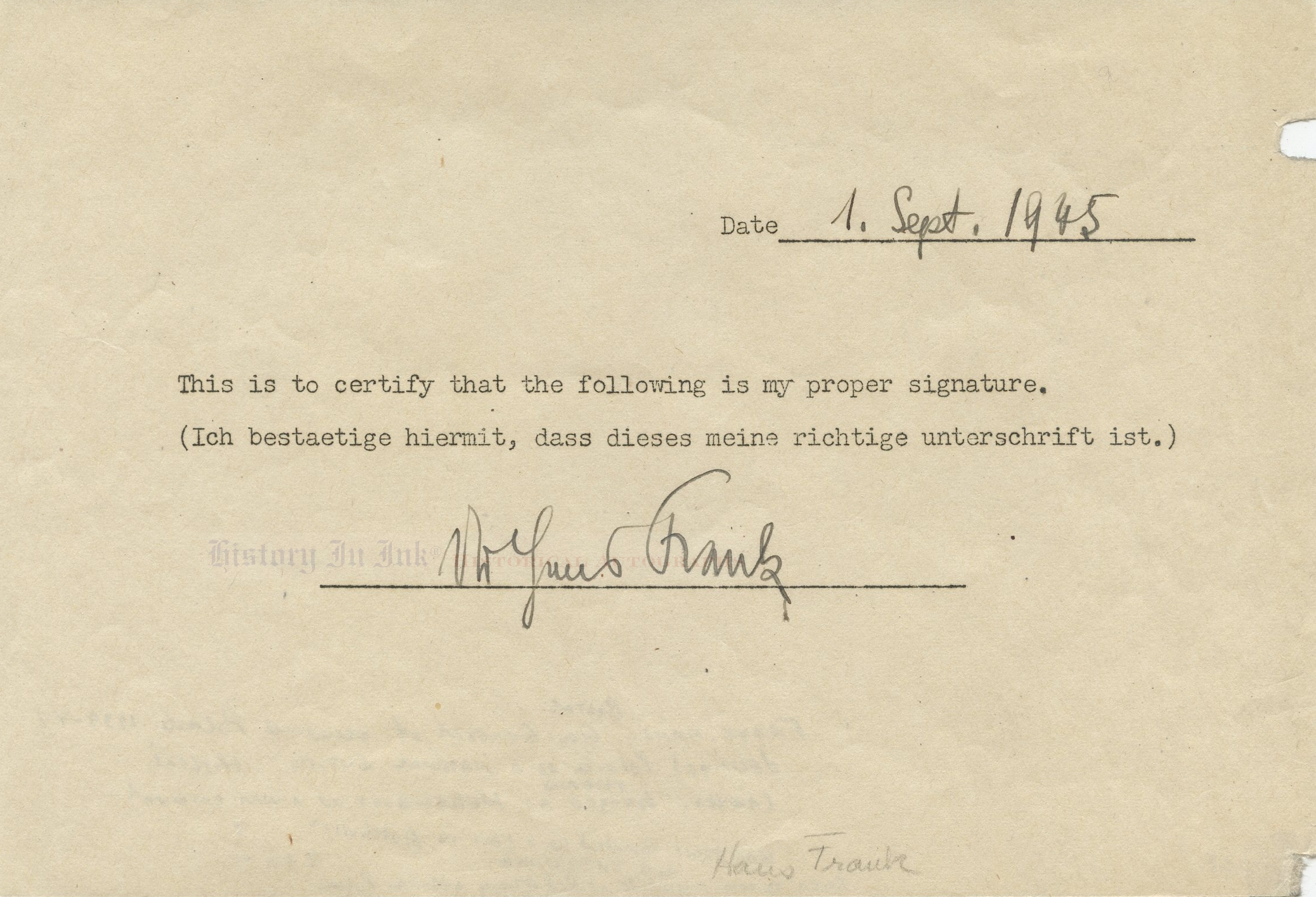
Hans Frank
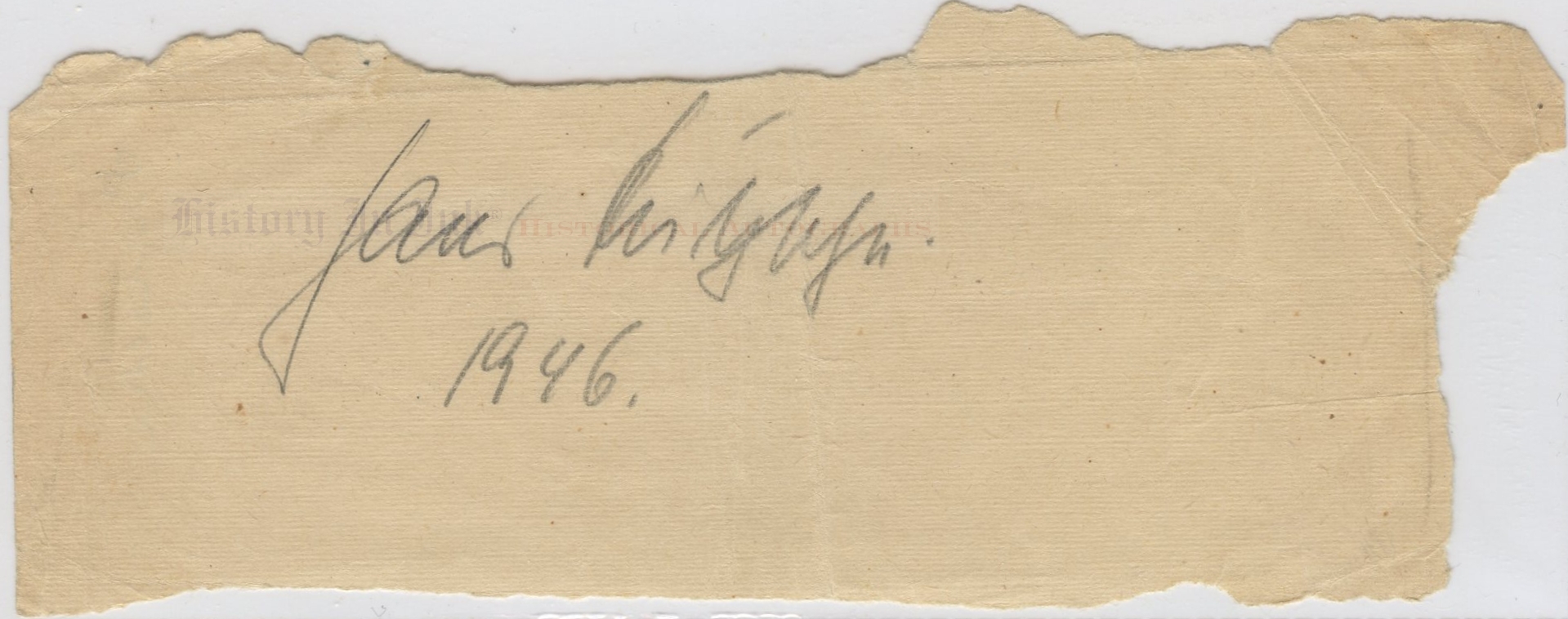
Hans Fritzsche
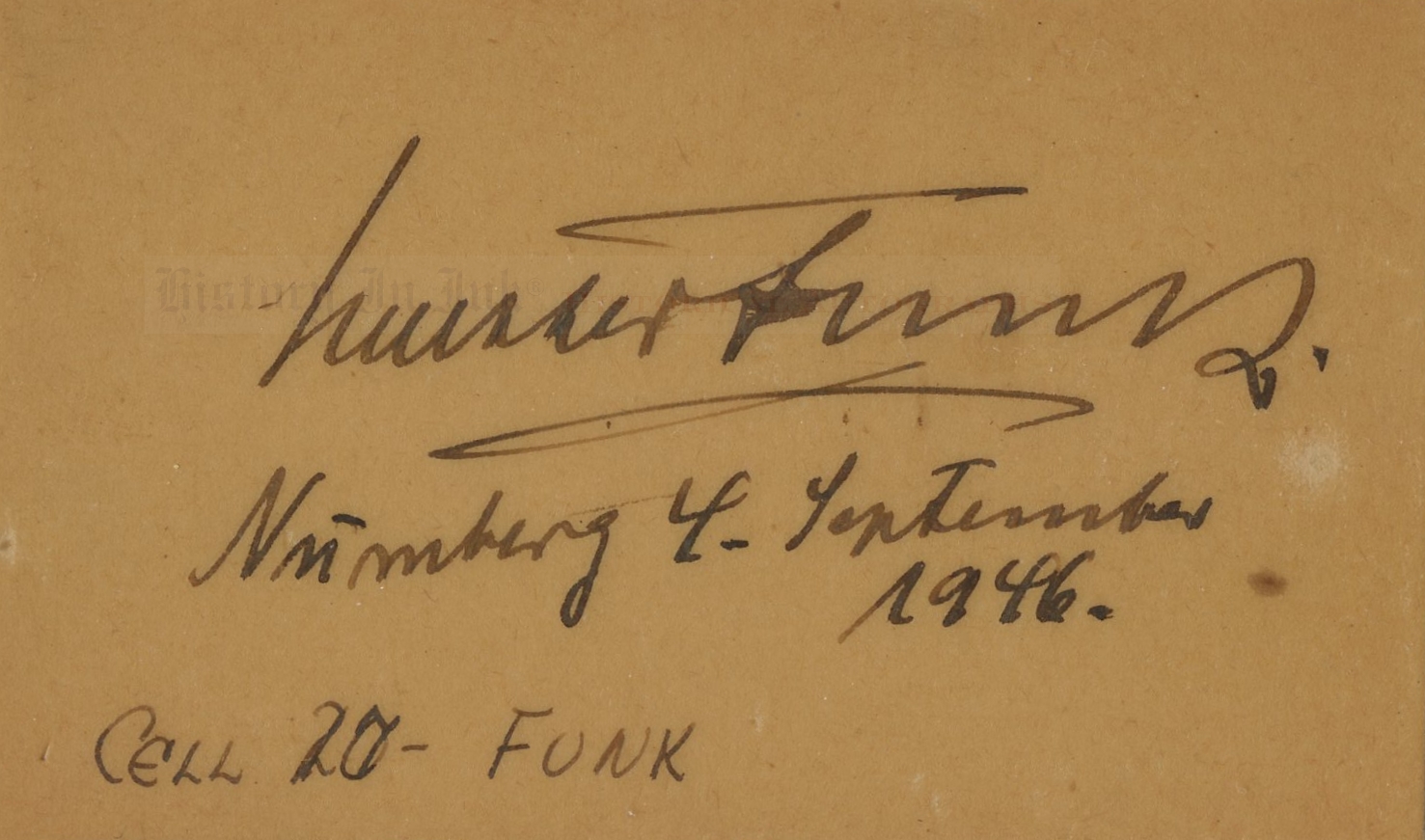
Walther Funk
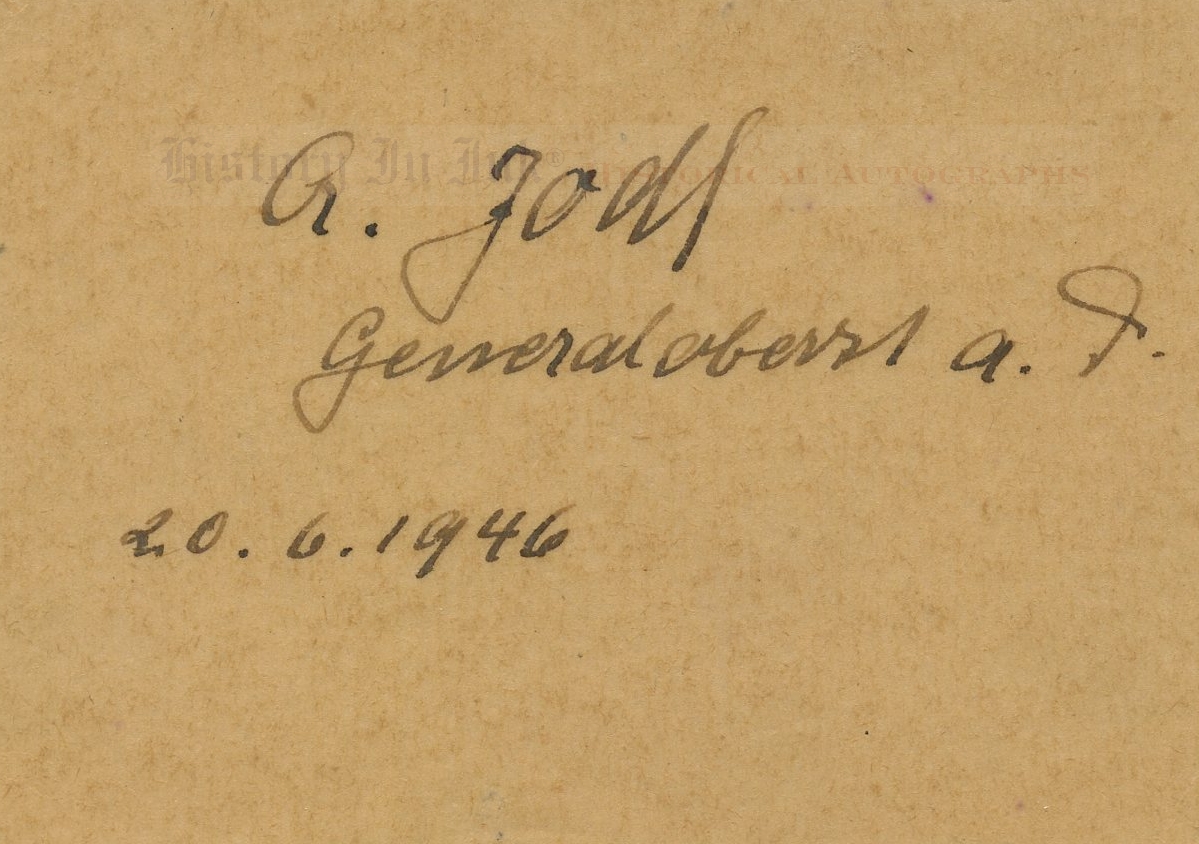
General Alfred Jodl
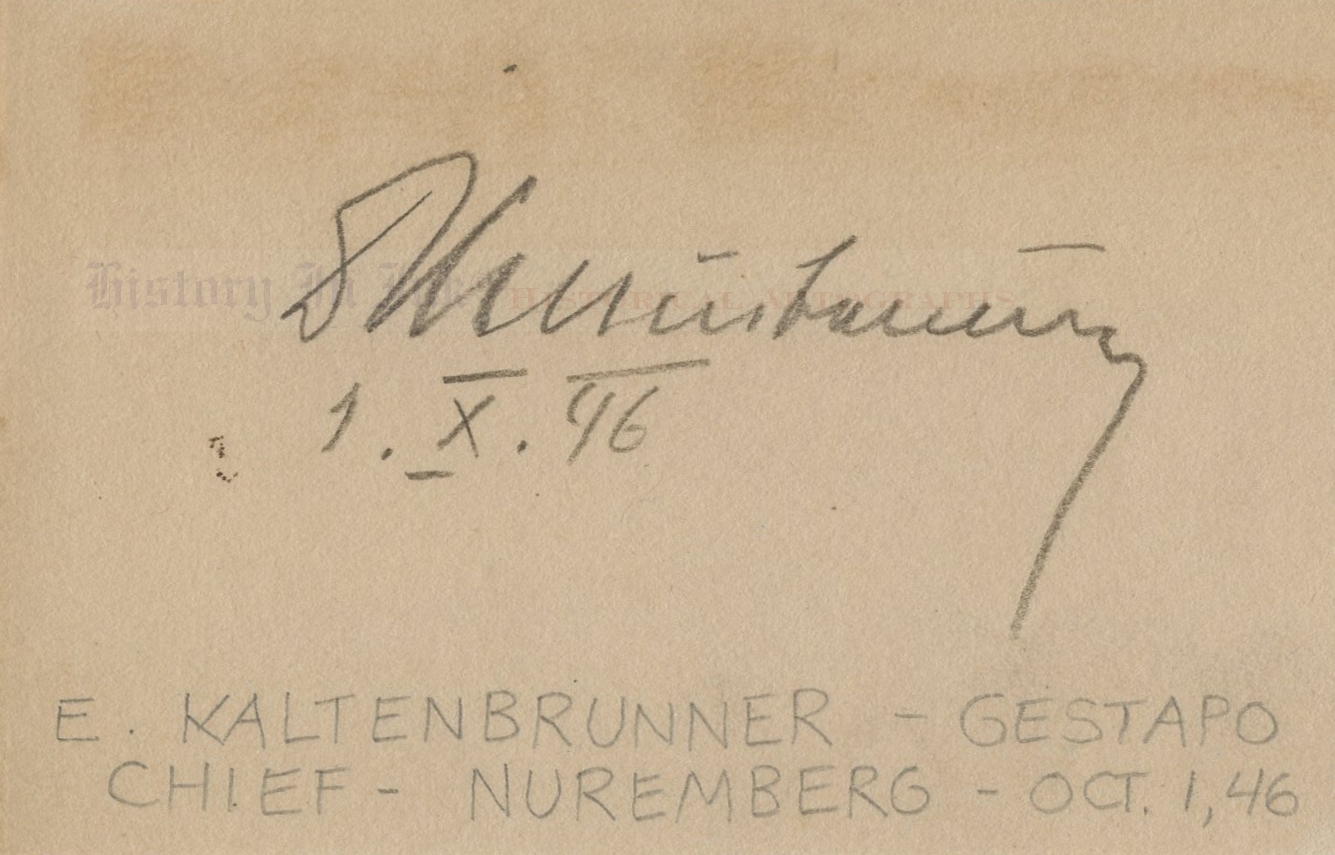
Ernst Kaltenbrunner
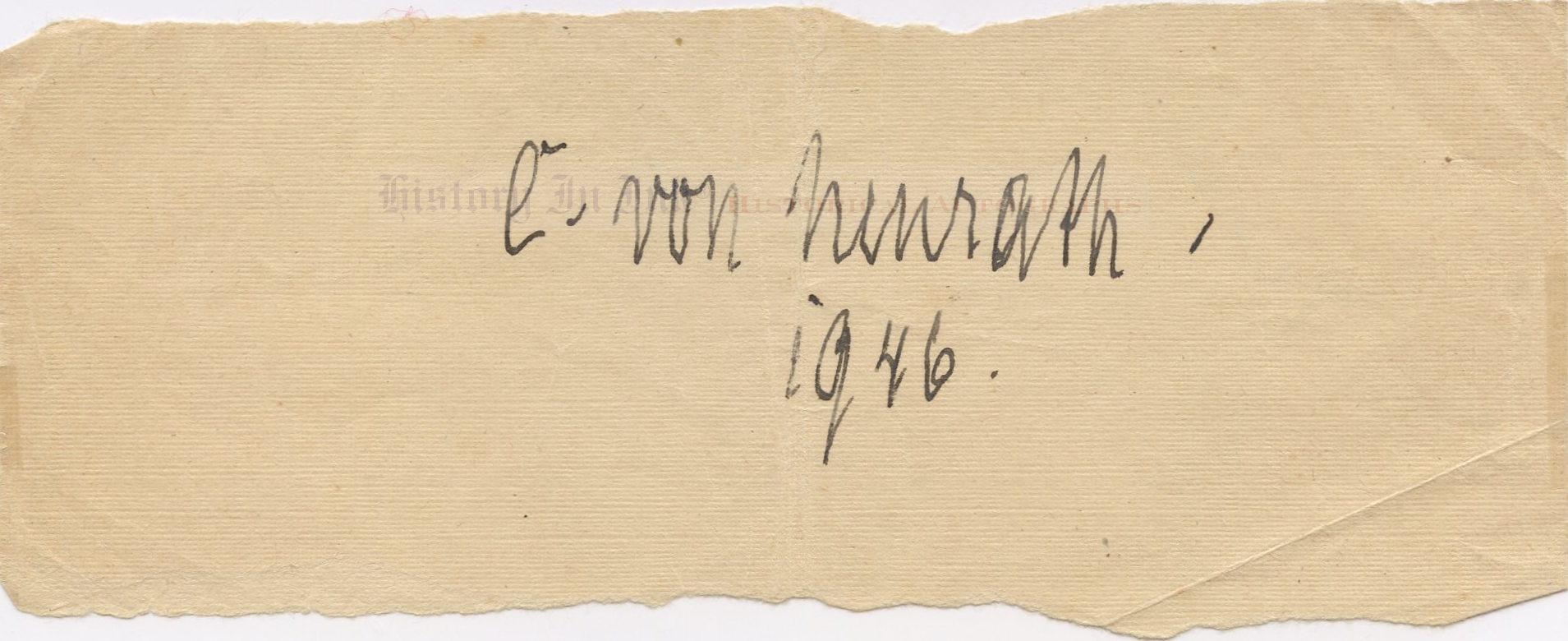
Konstantin von Neurath
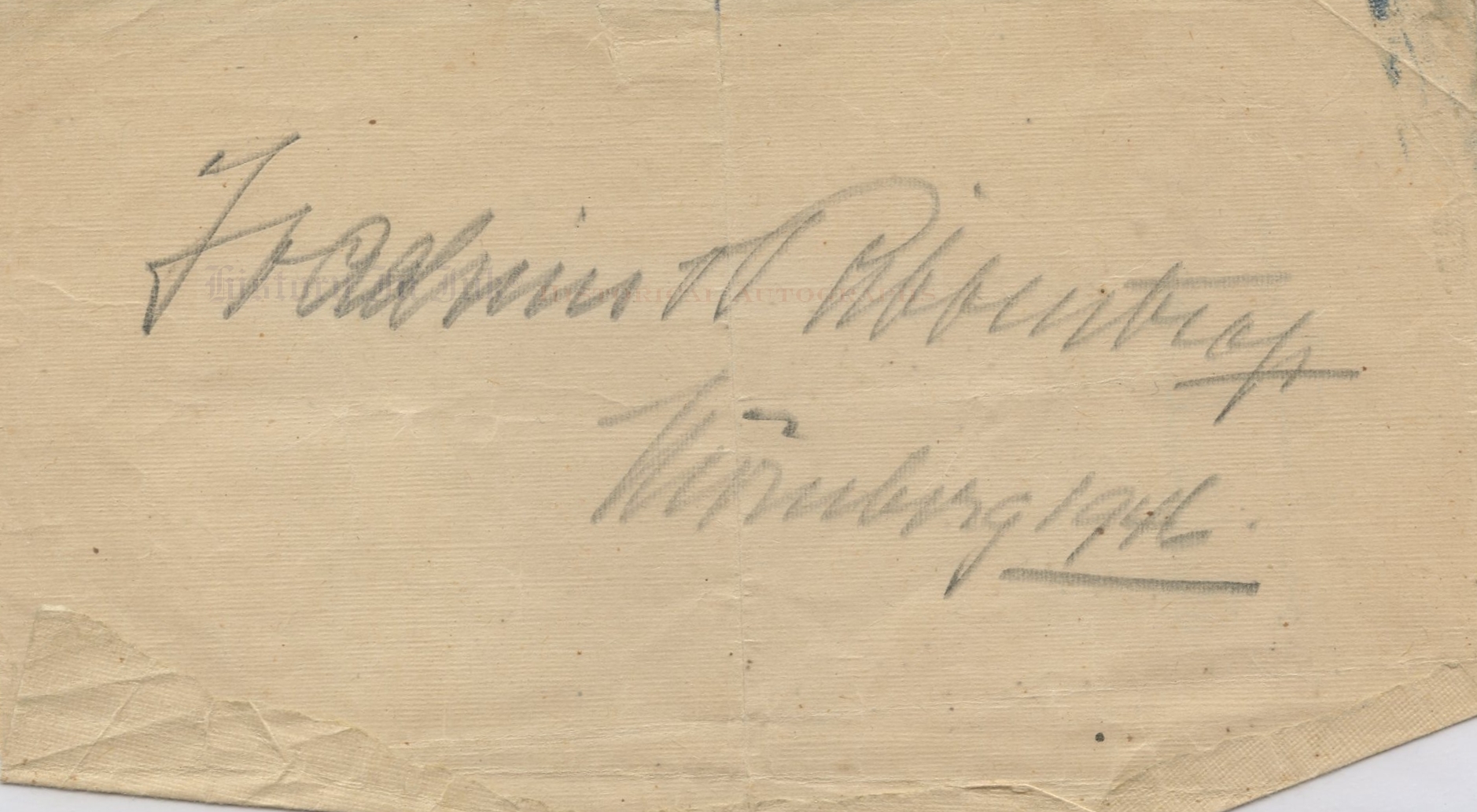
Joachim von Ribbentrop
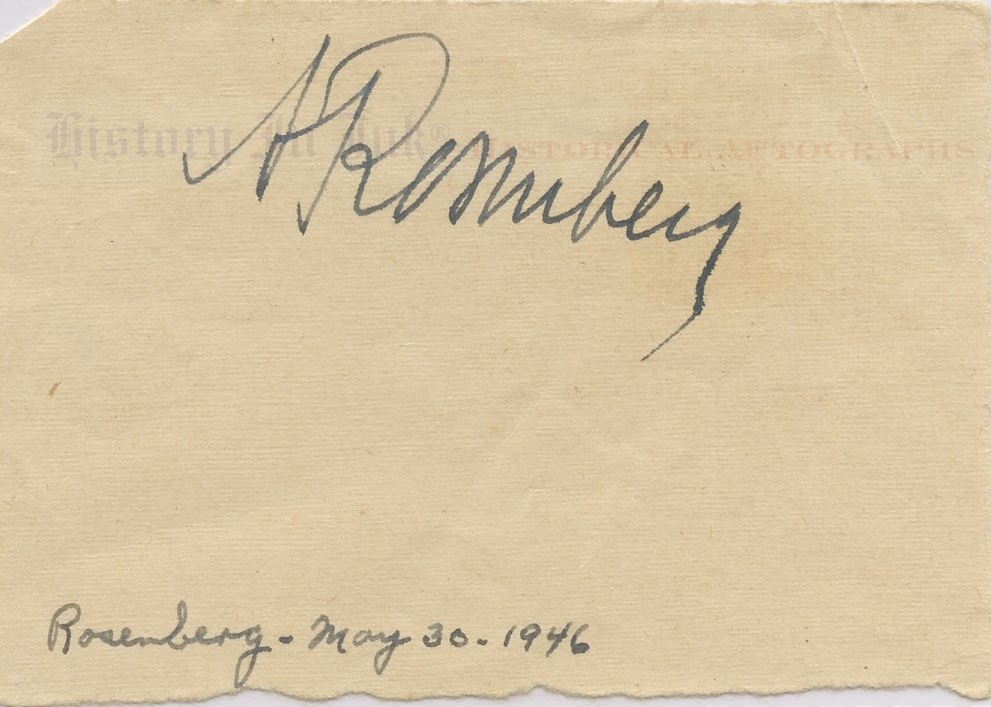
Alfred Rosenberg
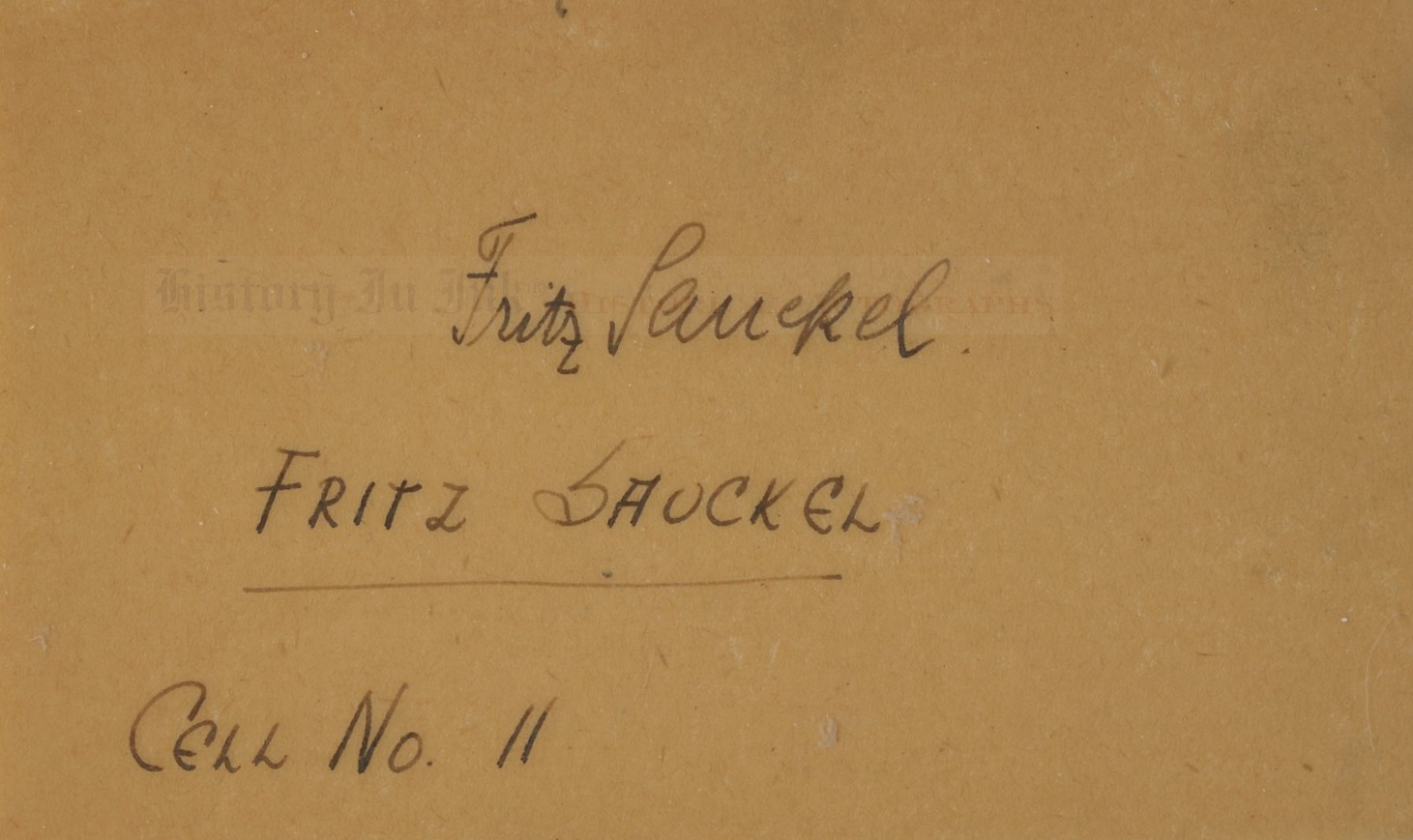
Fritz Sauckel
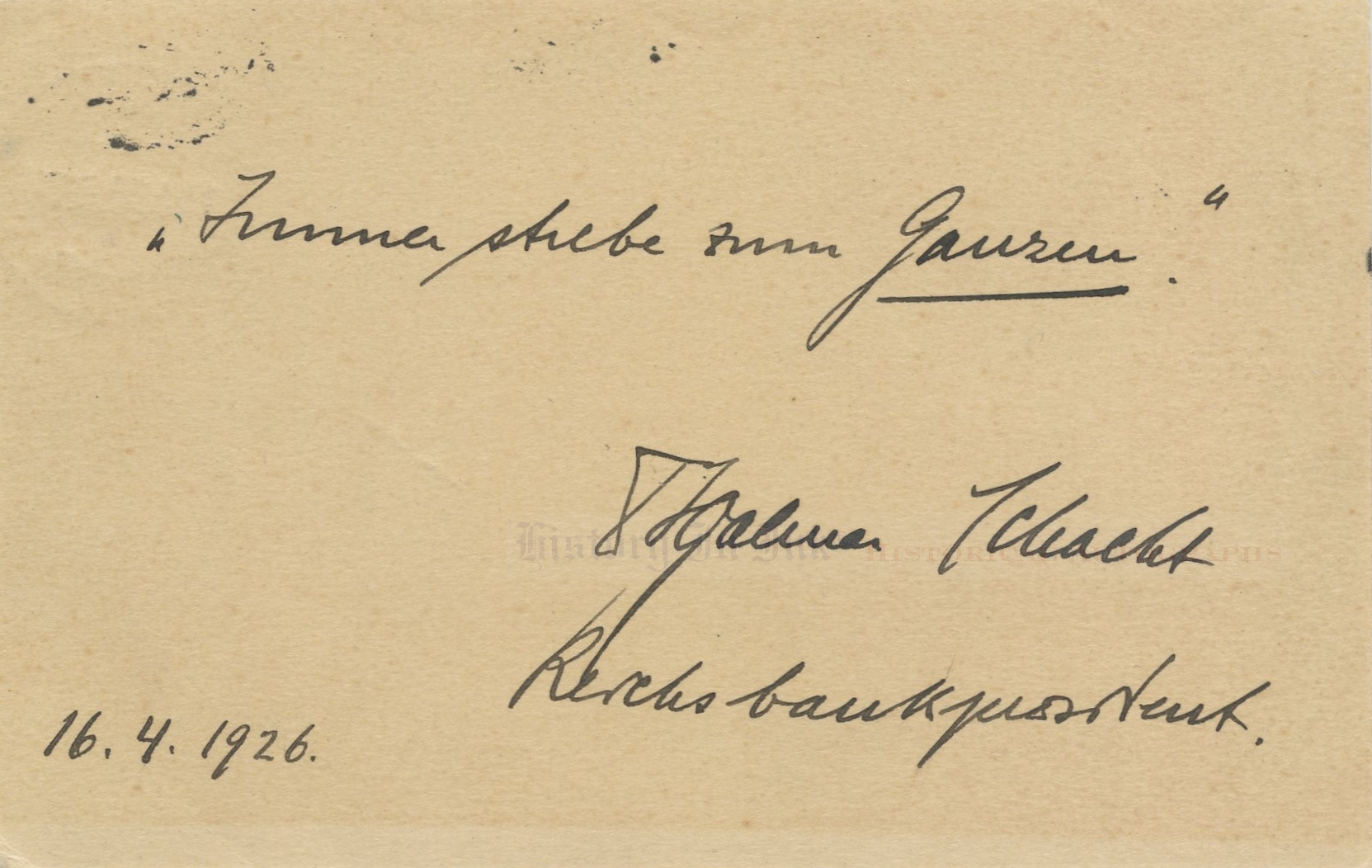
Hjalmar Schacht
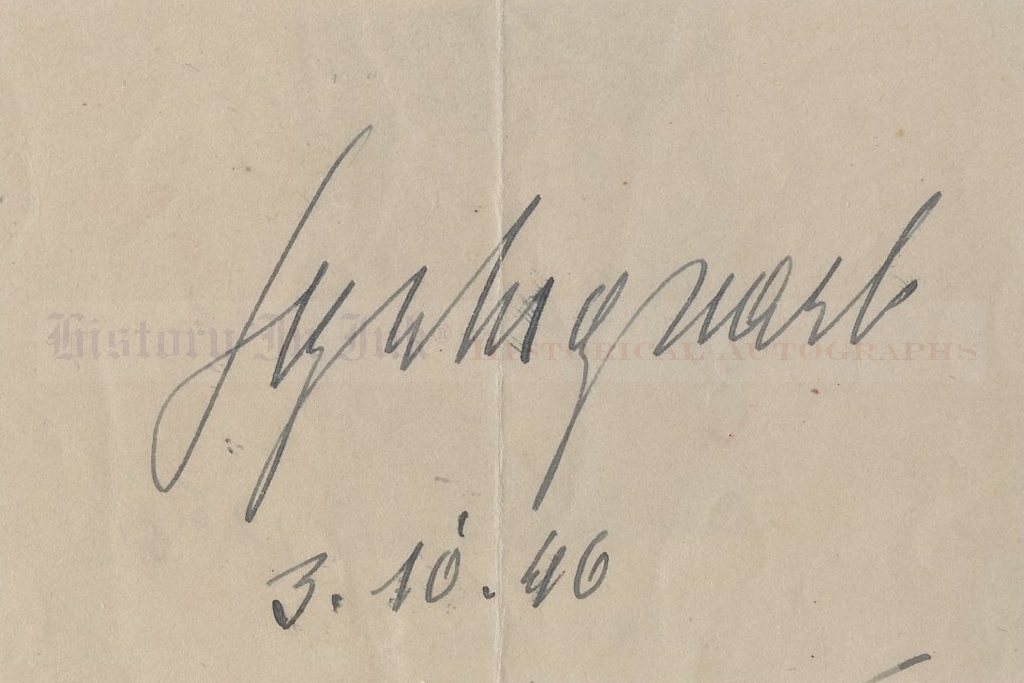
Arthur Seyss-Inquart
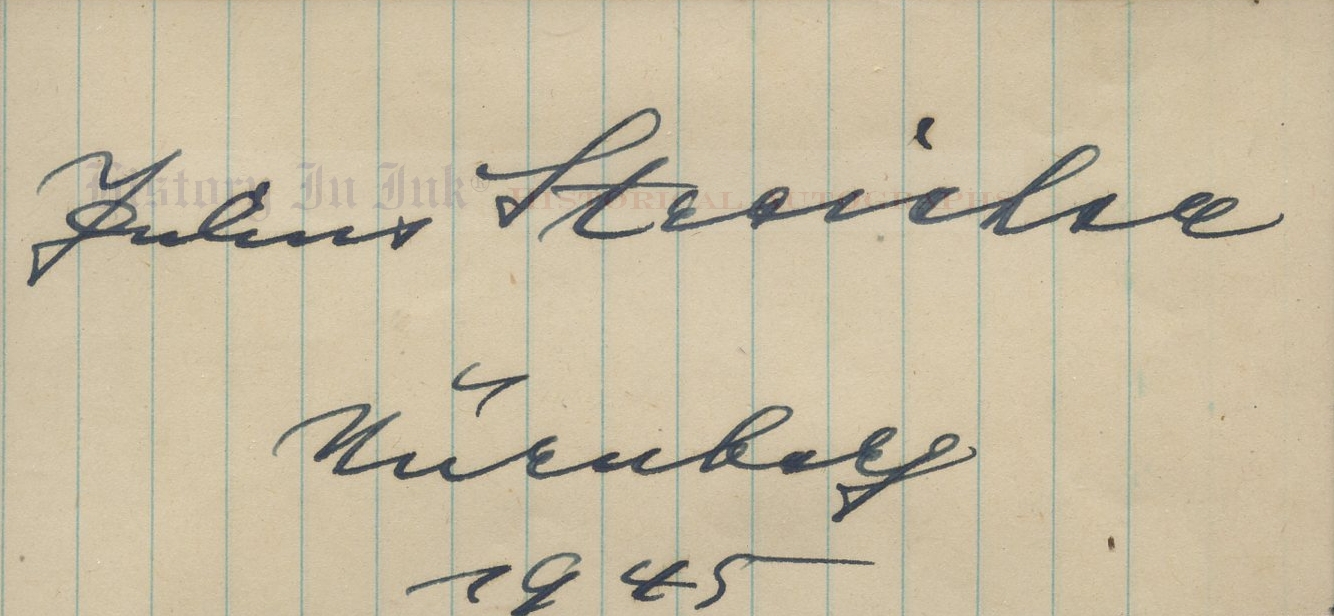
Julius Streicher
To the extent applicable to those affected by German law, particularly § 86a StGB, historical and military items from or relating to the period and personalities of the German Third Reich are offered for only purposes of education and research regarding
historical events and military history and uniforms. Clients who purchase such items agree that they will not use them for propaganda or other purposes that would be punishable under § 86a StGB.
